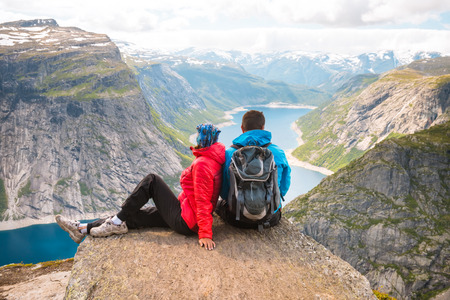1. Plan Ahead and Share Your Itinerary
Before you hit the trail, it’s important to put some thought into your hike. Planning ahead is more than just picking a destination—it’s about making sure you have all the information you need to stay safe. Here are the key steps every beginner should take before heading out:
Research Your Trail
Start by looking up the trail you want to hike. Check if it matches your fitness level and experience, and read recent reviews for any updates on trail conditions. Many U.S. hiking trails have websites or are listed on apps like AllTrails, which can provide maps, difficulty ratings, and user tips.
Know the Weather Forecast
Weather in the U.S. can change quickly, especially in mountainous or remote areas. Always check the weather forecast on reliable sources like the National Weather Service or local news stations before you go. Knowing what to expect helps you pack appropriate gear and clothing.
Let Someone Know Your Plans
One of the most important safety steps is telling someone reliable about your plans. Let them know:
| Your Starting Point | Your Destination | Expected Return Time | Who You’re With |
|---|---|---|---|
| Name of trailhead or parking lot | The full route or area you’ll explore | Time you plan to be back (including a buffer) | If hiking with friends or solo (names if possible) |
This way, if something goes wrong, help can reach you faster. In many U.S. parks, rangers recommend leaving a note in your car as well, but always prioritize telling a friend or family member who isn’t on the hike with you.
2. Pack the Ten Essentials
When you’re heading out on a hike, being prepared is key to staying safe. One of the best ways to make sure you’re ready for anything is by packing the “Ten Essentials.” This classic list, trusted by American hikers and outdoor experts for decades, covers the most important gear you’ll need for navigation, emergencies, and comfort on the trail.
What Are the Ten Essentials?
| Essential | Why You Need It |
|---|---|
| Navigation (map, compass, GPS) | Helps you stay on track and find your way if you get lost |
| Headlamp or flashlight | Provides light after dark or in low-visibility conditions |
| Sun protection (sunglasses, sunscreen) | Protects your skin and eyes from sun damage |
| First aid kit | Allows you to treat scrapes, blisters, or minor injuries |
| Knife (or multitool) | Useful for repairs, food prep, or emergencies |
| Fire starter (matches, lighter) | Keeps you warm and can signal for help if needed |
| Shelter (emergency blanket or bivy) | Protects you from wind and rain if you have to stop unexpectedly |
| Extra food | Keeps your energy up if your hike takes longer than planned |
| Extra water (or water filter) | Makes sure you stay hydrated throughout your adventure |
| Extra clothes (layers) | Keeps you comfortable as weather changes, especially in the mountains |
Packing Tips for Beginners
- Keep it lightweight: Choose compact versions of each item so your backpack isn’t too heavy.
- Double-check before leaving: Make a checklist and cross off each essential as you pack it.
- Add a whistle: A loud whistle is great for signaling in an emergency and takes up almost no space.
- Know how to use your gear: Practice using your map, compass, or first aid supplies at home before hitting the trail.
- Pace yourself with food and water: Carry more than you think youll need—unexpected delays are common.
The Bottom Line on Packing Smart for Safety
No matter where you’re hiking in the U.S., bringing these essentials helps keep small problems from becoming big emergencies. It’s about being ready—not just for yourself but also so you can help others if needed. With these basics in your pack, you’ll feel more confident exploring America’s beautiful trails.

3. Know Your Limits and Pace Yourself
One of the most important things for beginner hikers is to be honest about your abilities and fitness level. Not every trail is right for everyone, and trying to push beyond your limits can quickly lead to exhaustion or even injury. Before you head out, research the hike and choose one that matches your experience and physical condition.
How to Choose the Right Hike
| Trail Difficulty | Fitness Level Needed | Typical Features |
|---|---|---|
| Easy | Beginner | Short distance, gentle slopes, well-marked paths |
| Moderate | Average Fitness | Longer trails, some elevation gain, possible rocky terrain |
| Difficult | Experienced/High Fitness | Steep climbs, rough surfaces, longer distances, less signage |
Listen to Your Body
No matter what trail you choose, pay attention to how you’re feeling during the hike. If you start feeling tired or notice muscle fatigue, take a break—even if you’re eager to keep going. It’s common in American hiking culture to take snack breaks (“trail mix breaks”) or pause at scenic viewpoints for water and rest. This helps prevent overexertion and makes the hike more enjoyable.
Pacing Tips for Beginners:
- Start slow: Begin at a comfortable pace; it’s better to speed up later than wear yourself out early.
- Take regular breaks: Plan short stops every 30-60 minutes to drink water, eat a snack, and enjoy the scenery.
- Avoid comparing yourself: Everyone hikes at their own speed. Focus on your comfort instead of keeping up with others.
- If you feel unwell: Don’t hesitate to turn back or rest longer. Safety always comes first on the trail.
By choosing hikes that match your fitness level and taking time to pace yourself, you’ll build confidence and stamina with every adventure—and have a lot more fun along the way!
4. Respect Wildlife and Leave No Trace
When hiking in the United States, respecting nature and wildlife is a big part of outdoor culture. Following the Leave No Trace principles helps you protect the environment and keeps everyone safe—yourself included! Here are some key points to remember:
Leave No Trace Principles
| Principle | What You Should Do |
|---|---|
| Pack Out All Trash | Bring a small bag to carry out everything you bring in, even tiny things like food wrappers or fruit peels. |
| Stay on Marked Trails | Stick to established paths to avoid damaging plants and prevent erosion. Wandering off-trail can harm delicate habitats. |
| Respect Wildlife | Observe animals from a distance. Never try to feed or touch them—it’s safer for both you and the animals. |
Why It Matters
The outdoors is home to many creatures, and it’s important not to disturb their natural behaviors. Getting too close can stress wildlife or even put you at risk. Also, litter can attract animals to trails, making them less safe for future hikers.
Quick Tips for Beginners:
- Keep pets on a leash if allowed on the trail.
- If you see wildlife, stop and quietly observe from afar.
- If you need to go off-trail (for example, for bathroom breaks), follow park rules and use designated areas when possible.
- Avoid picking flowers or removing rocks—leave what you find so others can enjoy it too!
By following these simple habits, you help make sure America’s beautiful trails stay wild and clean for everyone.
5. Be Prepared for Emergencies
Even on the best-planned hikes, things can take an unexpected turn. Thats why its so important to be ready for emergencies before you hit the trail. Here are some simple but essential steps every beginner hiker should follow:
Carry Reliable Communication Devices
Always bring a fully charged cell phone in a waterproof bag. In areas with no service, consider packing a satellite communicator or personal locator beacon (PLB). These tools can help rescuers find you if you get lost or injured.
Communication Tools Comparison
| Device | Best For | Pros | Cons |
|---|---|---|---|
| Cell Phone | Short hikes, areas with coverage | Easy to use, familiar, apps available | No service in remote areas, battery may drain quickly |
| Satellite Communicator/PLB | Remote hikes, off-grid adventures | Works anywhere, emergency SOS function | More expensive, requires setup and practice |
Know Basic First Aid Skills
You don’t need to be a medical expert, but knowing how to treat blisters, minor cuts, sprains, and insect bites can make a big difference. Carry a basic first aid kit and learn how to use everything in it before your trip.
First Aid Kit Essentials:
- Bandaids and gauze pads
- Antibiotic ointment
- Pain relievers (like ibuprofen)
- Moleskin for blisters
- Tweezers and small scissors
- Ace wrap for sprains
- An emergency blanket
Have Backup Plans Ready
Weather and trail conditions can change fast. Always tell someone where you’re going and when you expect to return. If the weather turns bad or you run into unexpected obstacles, be prepared to turn back or take an alternate route. Flexibility and quick decision-making are key to staying safe.


